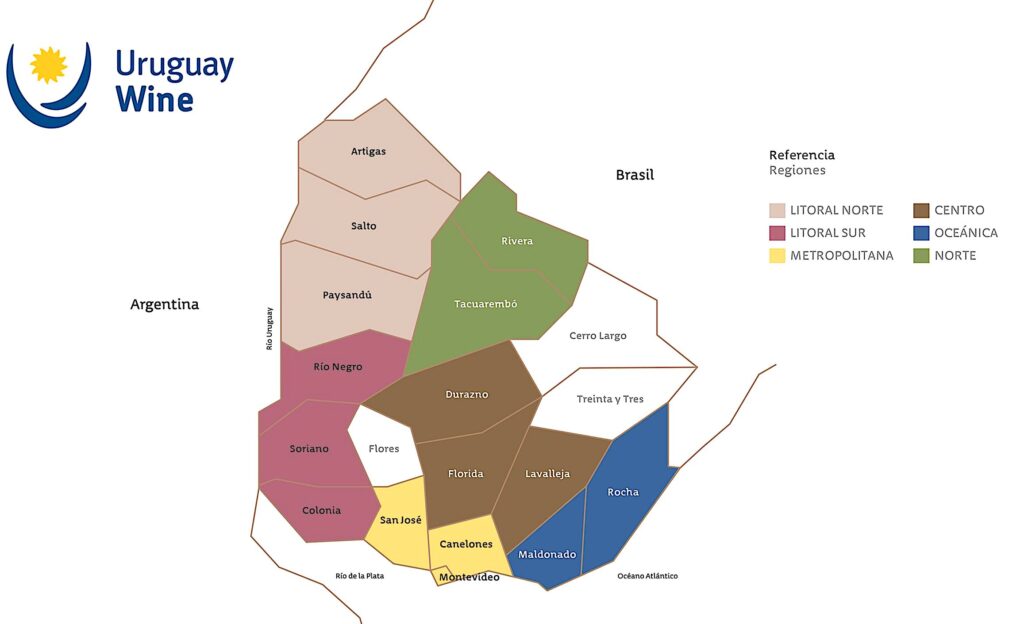Uruguay is a small independent South American country sandwiched between Brazil (northern border) and Argentina (southern border). Uruguay’s geographical location, climate and clay-based soils provide an ideal environment for the cultivation of fine wines. Similar to other great wine producing regions, such as Bordeaux, France, Uruguay’s regional coastal climate is influenced by the Atlantic Ocean but not entirely. Interestingly, Uruguayan vineyards are affected by cool air currents generated from the Antarctic; this unique climate serves as a platform for a unique terroir unlike any other in the world. And it didn’t take long for settlers to begin producing wines. The Uruguayan wine industry was started by immigrants of mainly Basque and Italian origin in the late nineteenth century (in the early 1870’s). Around that time, Tannat was also introduced to Uruguayan vineyards by a Basque migrant named Don Pascual Harriague. Only very recently, in 1954, was the Albariño grape brought to Uruguay by immigrants from the Galician region of Spain. Finally, the often overlooked Marselan grape, a hybrid of Cabernet Sauvignon and Grenache (bred by a French ampelographer in 1961), was recently introduced to Uruguay and is produced as a varietal by Bodegas Garzon In a very short timespan, the wine growing industry has burgeoned in this small country; Uruguay is now the fourth-largest producer of wine in South America, with approximately 9000 hectares. It is perhaps best known for its signature varietal – the Tannat grape – and its deep luscious red wines. The lower alcohol levels in Uruguayan wines allow the flavors to shine through whilst the tannins provide structure and balance. And although the red wines are the star here, white and rose wines have also shared a place on stage – Muscat Hamburg is the varietal to look out for when seeking out rosé winesand Albarino for white wines.

Wines of Uruguay – Key Terms and Definitions
Grape Varietals
#1 Tannat approximately 36% of all wine production. The ‘national varietal Uruguay produces more Tannat than France (the country where it originated from). Tannat grapes produce a flavor profile often described as plum and raspberry with a spicy finish. The typical color is deep dark intense red and purple hues. Look for smoke and ripe berries on the nose.
#2 Assorted other varietals including Merlot 10%, Chardonnay, Cabernet Sauvignon, Sauvignon Blanc, Cabernet Franc and Syrah
#3 Albarino – relatively new and increasing in popularity. First planted in 2001 by the Bouza family.
#4 Muscat Hamburg – for rose wines
#5 Marselan – A unique hybrid cross between Cabernet Sauvignon and Grenache. Flavor profile of mixed berries, plum; higher in tannins for aging purposes
Uruguayan Wine Classification System – there are two categories
#1 VCP or Vino de Calidad Preferente = high quality wines made from Vitis Vinifera varietals only
#2 VC or Vino Común = common or table wines
Wine regions
Canelones is the most famous wine region in Uruguay. It is located in the “Southern zone.” Other regions include Montevideo, San Jose, Durazno, Maldonado, Rivera and Carmelo, Colonia. Maldonado is notable for its oceanic climate and free-draining soil composed of granite, rocks, and sand. If you want to try Maldonado wines, suggest starting with Bodega Garzón or Bodegas Bouza (https://www.decanter.com/premium/maldonado-uruguays-coastal-region-400400/).
**Interesting fact – Maldonado Pinot Noir is used to make some of Uruguay’s finest sparkling wines, in the style of champagne. Unique and well-crafted Pet Nat’s are also currently being developed and marketed – I recently had the opportunity to try one at a wine tasting held at Terroir Wine bar in Tribeca – it rivaled some of the best in its category. An unexpected but pleasant surprise. Cheers !